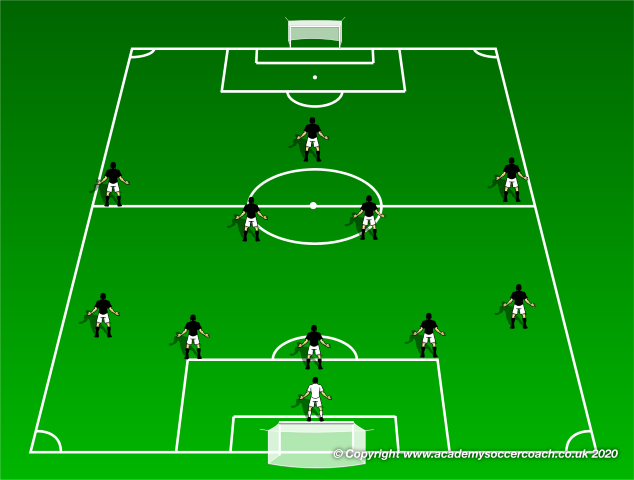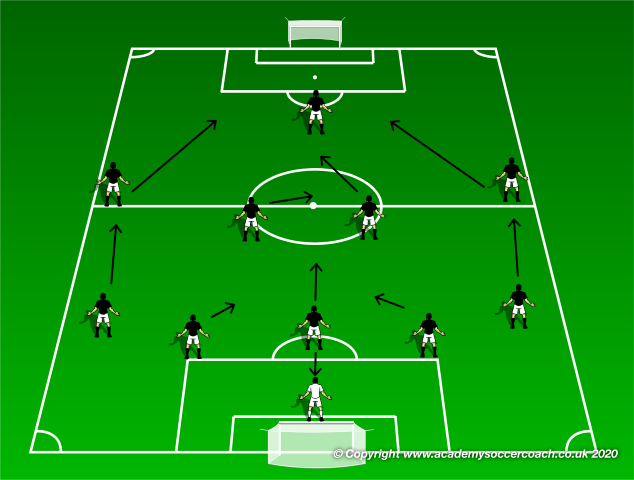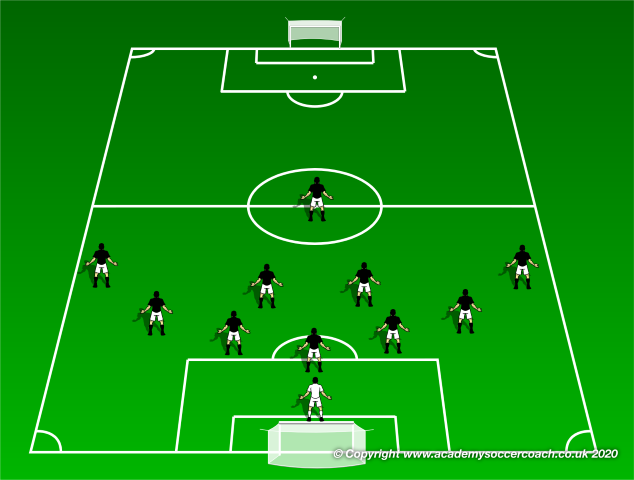By Matthew Carroll
Newcastle United under Rafa Benitez, with their limited resources, were able to find some minor successes with this formation in the 2018-2019 season. Under Rafa’s replacement, Steve Bruce, the Toon were also able to gain signature wins over Chelsea, Tottenham, and Manchester United during the 2019-2020 season using the same tactics and 5-4-1 formation as they had in the 2018-2019 season.
Although on paper, and often in execution, the 5-4-1 is a deeply defensive formation, the formation does provide a number of unique attacking options. The high number of defensive players to provide cover allows freedom for wingers, outside centre backs, the center back, or any combination of those groups to push forward and attack from a deep lying position. It lends itself well to any team looking to play a low block and hit their opponents on the counter, but it also allows for teams to play a higher line with wingbacks pushing into winger positions freeing up the wingers to push forward or more centrally.

Offensive Philosophy -
3+2 mostly act as deep wingers who push forward + 11 and 7 become either center mids or strikers like in a 433. With players setting up from deep, the idea is we counter wherever the opposition leaves gaps, especially backside. It is meant to look defensive, but when players press forward it can become a 4231 or 433, even a 352 in its most aggressive form. The 9 should push against the opposition back line, but be prepared to drop in as a false 9 if there is a large gap between the 9 and the mid. When the 9 drops in it allows the 11/7 to cut in and play into the space that the center back gives from following the 9. If the center backs stay home, the 9 has room to go forward + the 11/7 can make diagonal runs between outside back + center back. The 6+8 can pivot, but the 6 should look to mark out opposition 10, if the opposition plays with a lone central striker, they can help double, so the 6’s offense will come mostly from playing wide to the 11/7 or 3/2, playing to the 9 as a target man, or connecting with the 8. The 8 should look to play through to 11/7/9, or replace the 9 if they drift wide. If opposition plays something wide like a 433, the 3/2 stay home and it gives the 4s, more room to press forward and become another mid, allowing the 11/8/7 to press forward. If the opposition plays 2 strikers, or a lone striker with deep lying wingers, the 3/2 can move forward like wings, and the 11/7 can cut in. If playing classic (left side winger is a lefty), the 3/2 should cut in to play as a central midfielder. The 5 should read the depth of the centermids. If there is space they should go forward, especially if the press is focused wide or is behind the 5.

Defensive Philosophy -
This is the only point the shape should be 541, and then really only against a 433. The 5 should pick up the central striker with help from the 4s and the 3/4 + 2/4 doubling the other wide players. With 2 strikers, the 3/2 have more freedom to push up with the 4s + the 5 creating a 3v2. If a lone striker is played, the 3/2 should push up to wings 5 + 4 double. The other 4 helps double the 10, or frees the 6 to move to the 8. If any defenders are forward, the line needs to slide to a 4 or 3 back system. No matter what the outside defender must be inside of the widest oppo. player. The 11/7 must track back or it will leave huge gaps on the wing and create overloads against our 3/2 + 4. The 8 must stay central to stop any switches and keep a presence in the centermid. The 9 can drop to pick up any center back that run forward. Communication is essential.

Offensive Transition -
The 9 should drift wide, 8 should fill, 11/ 7 press forward + back line fills gaps created by opposition. being out of shape, especially looking for back side runs.
Defensive Transition -
Press ball side + work to back into defensive shape. Defensive back line must immediately get compact.
By Matthew Carroll


